SEO can make or break a brand well sort off, not to be dramatic but SEO does have a huge impact on small businesses and in this blog, we try to help you understand exactly why is that. Read on…
What is SEO?
With over 90% of online content created in the past 3 years, digital marketing heavily relies on tech that balances between getting its customers the most accurate content and its client justified visibility.
As technology & algorithms evolves, search engines also upgrade their tech making the need to be in sync and up-to-date with your SEO efforts more important than ever if you want to make the most of your web and digital media efforts.
SEO stands for “Search Engine Optimization“. Every time you search for something online and visit a website, you are counted as “traffic” for that website and the search that lead you to the results are called SERPs which stands for “Search Engine Result Page” here content with relevant information is ranked in an order of most accurate to least accurate. SEO helps create such content that helps your page rank on the first page of search engine results there by creating traffic and create awareness on your brand. Bots called “spiders” crawl through the web pages to analyse and rank content based on keywords and SEO that best suit the search made by the customer.
In simple words, SEO creates keywords and content that bots called spiders identify as valid and accurate information for the person searching for something online and then provide a list of such web pages on SERPs through which you access the website thereby getting counted as traffic to that website.
What are the Types of SEO Formats?
Most people think SEO only applies for written content, but that’s not true. Written content is one of the may different forms of SEO that are available for your business. All of them are listed below:
1.Written SEO– as they name suggests, it’s the content on the website and blogs that is optimized to meet the search engine bots’ criteria. Most importantly, content should have well placed keywords, accurate data and original content so that SERPs can feature it on their first page and this way the website will not be penalized for plagiarism and copied content. If content is copied, the search engine will recognize this and penalize the website with lower ranking and a search engine ban.
2. Voice SEO- with voice searches making up to 50% of the total searches online, it can be considered an important step to optimize your content to stay relevant to voice searches.
The reason written and voice search optimization are different is mentioned below:
- Voice searches are conversational– unlike written search which is shorter and keywords based, voice searches are made by people talking to their search assistant thereby asking for a full question instead of just keyword phrases.
- Voice users want results– unlike other searches these searches are aimed at immediate results. When you optimized your voice search add a call to action button since users may or may not visit your website but a call to action button to book an appointment or call the office of a local business will directly create lead generation instead of users going through their website and then contacting you.
- Voice searches are local– 22% of the voice searches show users look for local content, which is great for any business trying to boost its local presence.
3. Image/Video SEO– image search is another way through which visual SEOs are changing. For any written content it is always a good idea to add some sort of visual content to your blog or website.
Keep in mind the following tips-
- Add a high-quality image / video
- Try to use original image in place of stock, add captions to videos
- If you have to opt for stock search for more genuine pictures
- Compress the picture or video so it loads faster on the website
- Add descriptions
- Add meta titles
- Use relevant images to content
- Apply image responsiveness so it matches all screen sizes (use srcset)
- Add image alt text
- Provide context to your image
Different types of SEO
Mainly there are 4 types of SEO that a business must incorporate for a well all-rounded SEO approach:
- On page SEO – any technique that can be applied directly on to your website to improve your ranking is referred to as on page or on-site SEO. Some of which are Keyword, meta data, alt Text, https/SSL, title tag, title tag, URL structure, internal linking.
- Off page SEO – off page or off-site SEO are factors outside of the website,like back-links and social media that have created awareness about the website. Some techniques of off page SEO are:
- Back-links (links to your website on other blogs and websites)
- Social media
- Influencer reach
- Guest authors
- Brand mentions
- Forums
- Technical SEO– this refers to method that can help a website perform better, helping it make easy for crawlers (bots for search engines like spiders) to go through websites and help them rank better. It also includes making a website faster/ easier, help bots for a search engine understand it better.
- White and Black hat SEO – often SEO practices can be classified as black and white hat practices. While white hat SEO aims at guideline accepted approach to SEOs. Black hat breaks search engine rules in order to get higher and better SEO ranking.
Black hat SEO is aimed at bots and crawlers and doesn’t count as organic results. White hat SEO is aimed at a more human approach to create organic and high traffic for website through human’s interaction as it’s priority.
What are the best SEO practices?
Now that you are aware of SEO and how to utilize it for your business here are some best practices to incorporate:
- Research your keywords
- Optimize your website design
- Create compelling content (blogs, website landing pages)
- Add a good description and title
- Add meta data
- Understand your audience
- Add off page and on page SEO
- Add images and videos
- Add a call to action with high ranking web pages on the website.
What does SEO Do for My Business?
A small business can gain better target audience and crate an online brand Image through the right SEO approach. As a long-term approach here are the advantages of SEO for a small business:
- Higher business visibility
- Better traffic
- User friendly content
- Turns traffic to customers 80% better than any other technique
- Primary source of leads
- Greater user experience
- Brand credibility
- Encourages local visitors to physical business outlet
- Cost effective
- Small businesses are able to compete better through SEO.
Stats for SEO
- SEOs get the highest amount of organic traffic to a website.
- SEO drives 15% conversion rates.
- 75% users don’t scroll past the first page of a search engine result page.
- Search engines drive 10x more traffic to e-commerce sites.
- Sites that make the first page of search results hold 1890 meta words.
- There has been a 30% rise is voice-based search in the past year.
- Mobile searches have seen a steady rise and by the end of 2020 in the USA alone, 221 million users will search through their mobile devices.







